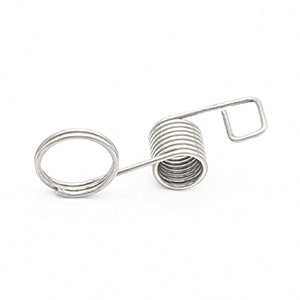Get unique, complex parts easily. No matter your requirements, Chaoyi Spring creates hard-to-produce coil springs and wire forms.
Let us help you create the custom wire form you need, from S-hooks and J-hooks to utility hooks and more.
We work closely with customers across a wide range of industries, helping them design and manufacture made-to-order parts.
Why choose Chaoyi Spring? We prioritize customer-focused collaboration, modern equipment and the latest technology to make your parts per print.
Find the information and guidance you need, from measuring a spring to learning about materials, placing an order and much more.
Spring compression is a vital process in various industries, from manufacturing to automotive. It involves reducing the spring's free length to achieve a desired force and displacement. The right tool


Spring compression is a vital process in various industries, from manufacturing to automotive. It involves reducing the spring's free length to achieve a desired force and displacement. The right tool for this task depends on the spring's size, material, and desired compression level. This article will explore the various tools available for compressing springs and how to choose the best one for your needs.

Spring compression tools are designed to securely hold a spring while applying force to reduce its free length. They come in various shapes and sizes to accommodate different spring types and dimensions.
Here's a breakdown of common spring compression tools:
C-clamps are a versatile tool often used for compressing smaller springs. They provide a simple and affordable way to apply pressure. However, they might not be suitable for large springs or those requiring precise compression.
These specialized tools are specifically designed for compressing springs and come in various configurations. Some common types include:
Spring compression plates are flat, rigid plates with holes or slots that hold the spring in place. They are often used in conjunction with a hydraulic press or other force application mechanisms. These plates are particularly useful for compressing large springs or those with unusual shapes.
Spring compression dies are specialized tools used with presses or other force-applying equipment. They are designed to compress springs with specific dimensions and geometries. These dies ensure precise and consistent compression for demanding applications.
Selecting the appropriate spring compression tool depends on factors such as:
Before purchasing a tool, it's essential to assess your specific needs and consult with a spring compression specialist to determine the best option.
Compressing springs can be hazardous, so safety precautions are crucial. Always wear safety glasses and gloves to protect your eyes and hands from potential hazards. Ensure the spring is securely clamped or held to prevent it from launching or causing damage during compression. Never attempt to compress a spring beyond its design limits, as this could lead to spring failure or injury.
Selecting the right spring compression tool is vital for a safe and successful outcome. Consider the spring's size, type, required compression force, and application environment before making a decision. Remember to prioritize safety by wearing appropriate protective gear and adhering to proper compression procedures. By taking these steps, you can ensure a smooth and successful spring compression process.
Choosing the right tool for compressing springs is a critical aspect of many industrial processes. This guide has provided an overview of common spring compression tools and the factors to consider when selecting the right one. With a little research and careful planning, you can ensure that your spring compression tasks are performed efficiently, safely, and with optimal results.
Browse some of the custom wire forms and springs that we manufacture. Don’t see what you need? We specialize in made-to-order products that meet your application requirements.
Visit Our GalleryNeed a custom wire form or coil spring? We make it work. Fill out the contact form and a representative will respond within 1 business day. If you have a PDF or CAD file, you can submit to request a quote.